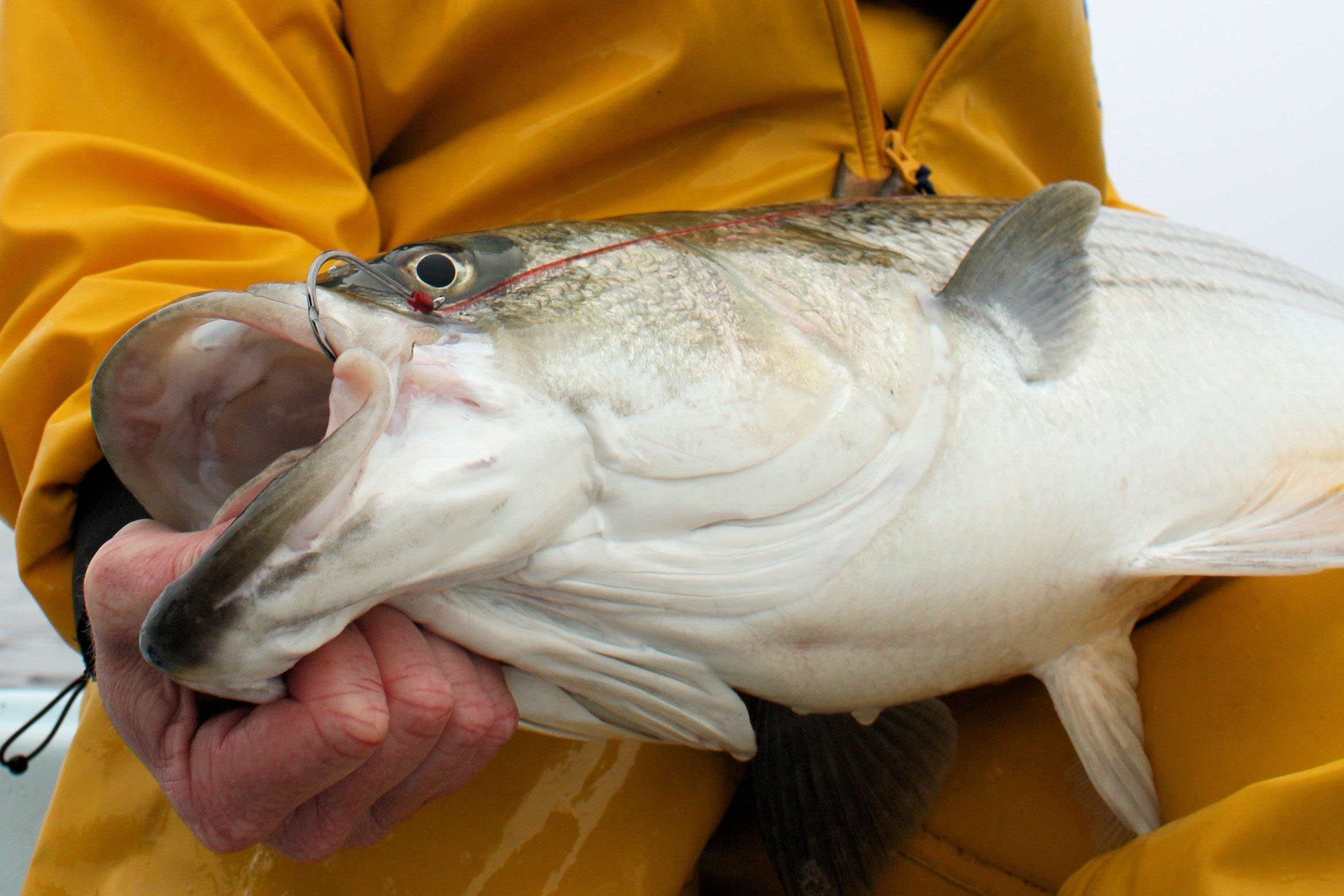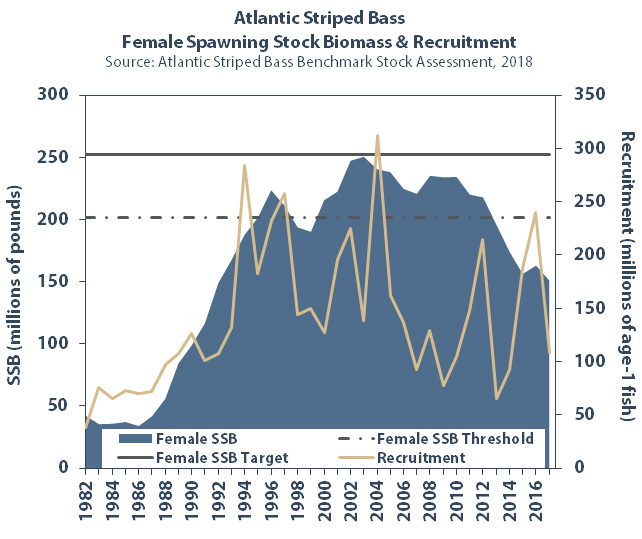
During the January 26th meeting of Atlantic States Marine Fisheries Commission (Commission), the Atlantic Striped Bass Management Board (Board) voted to put forth Draft Amendment 7 to the cooperative interstate fisheries management plan (FMP) for Atlantic striped bass. The Draft Amendment will be available on or before February 4, at which point public comment will extend until April 15.
Member states on the Board including Maine, New Hampshire, Massachusetts, Rhode Island, Connecticut, New York, New Jersey, Pennsylvania, Delaware, Maryland, Virginia, and North Carolina, along with D.C., the National Marine Fisheries Service, the Potomac River Fisheries Commission and the U.S. Fish and Wildlife Service debated several topics to be included – or even excluded – from the new amendment. The next step in the process is for Commission staff to work with member states to schedule public hearings along the Striper Coast over the next several months to review.
In February of 2021, the Board approved for public comment the Public Information Document (PID) for Draft Amendment 7. As the first step in the amendment process, the PID was a broad scoping document seeking public input on a number of important issues facing striped bass management. After the PID public comment period that included 11 virtual public hearings and more than 3,000 submitted comments, the Board approved a number of issues for development in Draft Amendment 7 including recreational release mortality, conservation equivalency, management triggers, and measures to protect the 2015 year class.
Any subsequent action following public comment this winter will come when the ASMFC reconvenes for their official spring meeting slated for May 2-5, 2022 at the Westin Crystal City in Arlington, VA.
The first Interstate FMP for Atlantic Striped Bass came in 1981, with the very first Amendments 1 and 2 in 1984 providing recommendations on how to sustainably manage the resource. Amendment 3 in 1985 was the first plan under the Atlantic Striped Bass Conservation Act of 1984 to include mandatory conservation measures designed to the 1982 year class, the first modestly-sized cohort for nearly a decade. That particular amendment to the FMP contained a mechanism to relax fishery regulations based on a juvenile abundance index triggered by the recruitment of the 1989 year class and leading to the implementation of Amendment 4 in 1989 aimed at rebuilding the striped bass resource. In 1995 with adoption of Amendment 5, the Commission declared Atlantic coastal striped bass stocks fully recovered.
Currently, striped bass is managed through Amendment 6 of 2003 which introduced a new set of biological reference points based on female spawning stock biomass, or SSB. As of the terminal year 2017 (see chart), female SSB was estimated at 151 million pounds, which is below the SSB threshold of 202 million pounds.

In 2019, a new benchmark assessment using updated recreational catch estimates based on the new Marine Recreational Information Program (MRIP) found striped bass to be overfished since 2013, and experiencing overfishing. As a result, Addendum VI was initiated to end overfishing and to bring down the annual mortality rate of striped bass. Specifically, this addendum reduced all state commercial quotas by 18% and implemented a one-fish bag limit and coastal slot limit on striped bass in order to achieve the 18% reduction in recreational removals required at the coastwide level.
In fact, in reviewing of the performance of the 2020 striped bass fishery, the Board found in August of 2021 that coastal states realized an estimated 28% reduction in total removals coastwide in numbers of fish from the 2017 levels, 10% more of a reduction than was required under Addendum VI.
The Board intends for the new amendment coming in 2022 to build upon the Addendum VI action to end overfishing and initiate rebuilding and includes proposals to better conserve above average young of the year classes in 2017 and 2018, as well as a strong 2015 year class of young fish.
Additionally, effort controls including possible seasonal closures with “no targeting options” on striped bass in terms of time and area will be included in the upcoming public comment document in an effort to reduce recreational release mortality.
More info at www.asmfc.org.
